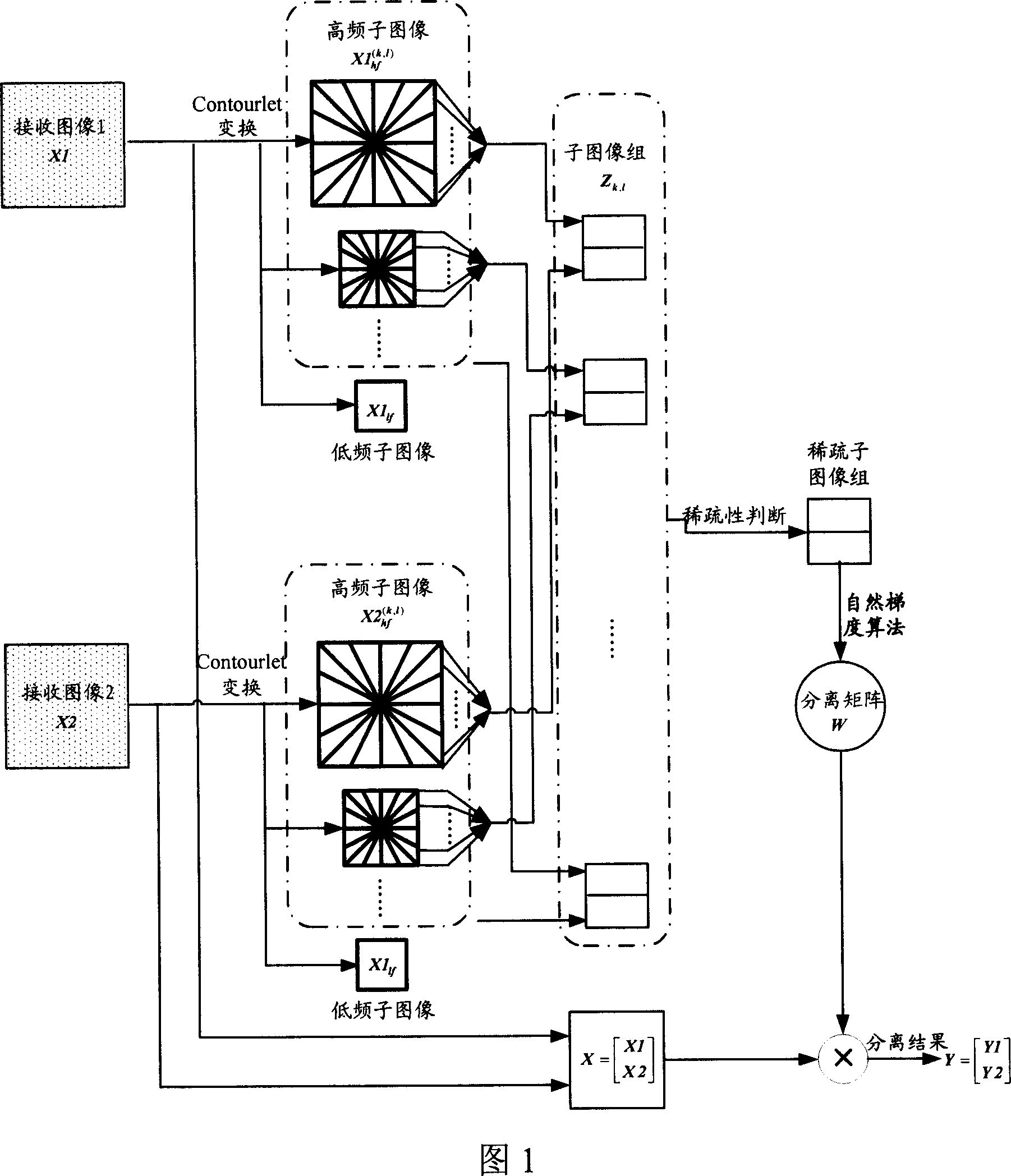Image blind separation based on sparse change
A technology of blind source separation and sparse transformation, applied in the field of image noise reduction, can solve the problems that restrict the performance of image blind source separation methods, and cannot effectively describe two-dimensional or high-Vitch heterogeneous information.
- Summary
- Abstract
- Description
- Claims
- Application Information
AI Technical Summary
Problems solved by technology
Method used
Image
Examples
Embodiment Construction
[0040] A preferred embodiment of the present invention is described as follows in conjunction with accompanying drawing:
[0041] This image blind source separation method based on sparse transformation is shown in Figure 1. First, use the Contourlet transform to perform multi-scale and multi-directional sparse decomposition of the received mixed image signal, and use the sparsity criterion in the Contourlet transform domain to select the sub-image group with the best sparsity; then use the traditional fast fixed-point independent component The analysis method conducts blind separation on the selected sub-image group to obtain the separation matrix; finally, uses this separation matrix to separate the received mixed image signal, extracts each independent component in the mixed image, and achieves the purpose of image blind source separation.
[0042] The specific steps are:
[0043] ①Initialize settings. Set the number of LP decomposition layers K and the direction decompos...
PUM
 Login to View More
Login to View More Abstract
Description
Claims
Application Information
 Login to View More
Login to View More - R&D Engineer
- R&D Manager
- IP Professional
- Industry Leading Data Capabilities
- Powerful AI technology
- Patent DNA Extraction
Browse by: Latest US Patents, China's latest patents, Technical Efficacy Thesaurus, Application Domain, Technology Topic, Popular Technical Reports.
© 2024 PatSnap. All rights reserved.Legal|Privacy policy|Modern Slavery Act Transparency Statement|Sitemap|About US| Contact US: help@patsnap.com










